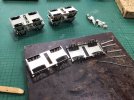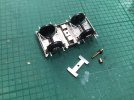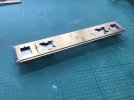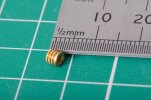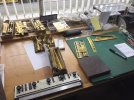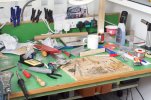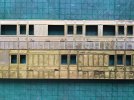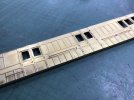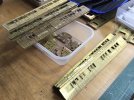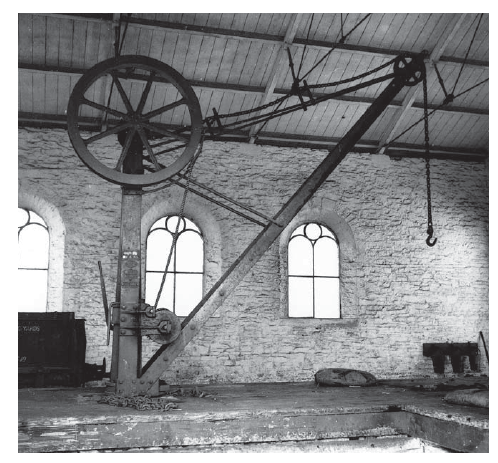Mark Tatlow
Member
Although you can compress the bolster spring by tightening the bogie pivot nut, I don't think this is sensible as it means that the bolster clasps the bearing surface to tight and makes it difficult to rotate.
I have not had any problems with bouncing/rocking and actually I find that that they are quite smooth. This might be because the bearing points of the bolsters are fairly widely spaced or it might be because the spring wires are quite thin so are compressed even when going into a dip.
The ride height of the wheels is adjustable by bending the springs slightly and David A's little jig is excellent (and David if I may I will nick this for a revision of the instructions?).
The bogie distance from the solebars/underframe is by adjusting the location of the bearing surface. Sadly, because the sprung bolster is deeper than say the Bill Bedford sprung bogies so you can't just pop then RTR coaches.
I have not had any problems with bouncing/rocking and actually I find that that they are quite smooth. This might be because the bearing points of the bolsters are fairly widely spaced or it might be because the spring wires are quite thin so are compressed even when going into a dip.
The ride height of the wheels is adjustable by bending the springs slightly and David A's little jig is excellent (and David if I may I will nick this for a revision of the instructions?).
The bogie distance from the solebars/underframe is by adjusting the location of the bearing surface. Sadly, because the sprung bolster is deeper than say the Bill Bedford sprung bogies so you can't just pop then RTR coaches.


